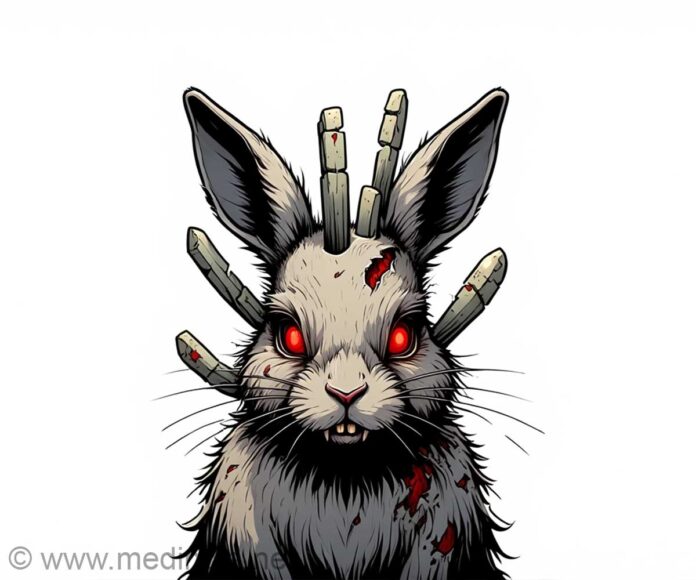Colorado rabbits with hornlike growths are infected by Shope papillomavirus, a virus linked to both warts and cancer research.
Zombie Rabbits? Yes—A Real-Life Horror Unfolds at Colorado Parks and Wildlife!
Colorado rabbits with hideous, hornlike growths as a result of infection with a very common virus (1✔ ✔Trusted Source
HOP HORROR ‘Zombie’ rabbits with tentacles have been spotted in the wild – is your pet safe?
Go to source
).
Advertisement
Shope Papillomavirus
The cottontails recently spotted in Fort Collins are infected with the mostly harmless Shope papillomavirus, which causes wart-like growths that protrude from their faces like metastasizing horns. The CRPV/rabbit model, with its diverse wild-type and mutant strains, offers a powerful preclinical system to study papillomavirus infections, test antiviral and immunotherapeutic strategies, and translate findings to HPV therapies.
Advertisement
Frankenstein bunnies
“Frankenstein bunnies,” “demon rabbits,” and “zombie rabbits” are the names given for these rabbits. However, their illness is not new; over a century ago, the virus sparked scientific inquiry and inspired old mythology.
The virus in rabbits was named after Dr. Richard E. Shope, a professor at The Rockefeller University who discovered the disease in cottontails in the 1930s. The virus likely influenced the centuries-old jackalope myth in North America, which told of a rabbit with antlers or horns, among other animal variations. The disease in rabbits also contributed to scientists’ knowledge about the connection between viruses and cancer, such as the human papillomavirus that causes cervical cancer.
The Viral Information:
1. Etiology & Transmission
Initially discovered in 1933, the Cottontail Rabbit Papillomavirus (CRPV) is the type species of Kappapapillomavirus. It has a circular DNA genome with 10 genes and two capsid proteins (L1, L2). Although jackrabbits and farmed European rabbits can also contract the disease, Sylvilagus rabbits are the natural hosts. Ticks and mosquitoes are the primary arthropod vectors of transmission; however, nematodes and contact may also be involved.
2. Clinical Features & Pathology
Infected rabbits develop horny warts (papillomas) on the skin, which may regress or progress to malignant squamous cell carcinomas. Up to 25% of Sylvilagus and 75% of European rabbits can develop cancers, with frequent lymph node and pulmonary metastases. Host immunity, viral genotype (e.g., regressive E6 gene), and genetic background (MHC haplotypes) influence disease outcome.
3. Diagnosis & Control
Diagnosis is clinical, based on skin papillomas confirmed by histopathology. No routine cell culture system exists. While the disease has little economic importance in wild rabbits, arthropod control is essential in rabbitries. Experimental vaccines (killed virus, tumor-cell vaccines) show promise in enhancing papilloma regression and resistance to reinfection.
Reference:
- HOP HORROR ‘Zombie’ rabbits with tentacles have been spotted in the wild – is your pet safe? – (https://www.thesun.co.uk/news/36309562/tentacle-zombie-rabbits-pet-safe/)
Source-Colorado Parks and Wildlife
